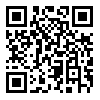Volume 2, Issue 3 (spring and summer 2025)
3 2025, 2(3): 189-209 |
Back to browse issues page
Download citation:
BibTeX | RIS | EndNote | Medlars | ProCite | Reference Manager | RefWorks
Send citation to:



BibTeX | RIS | EndNote | Medlars | ProCite | Reference Manager | RefWorks
Send citation to:
Analysis of the Quranic Language Aspects in the Functions of Social Allegorical Propositions. 3 2025; 2 (3) : 7
URL: http://cssq.ir/article-1-453-en.html
URL: http://cssq.ir/article-1-453-en.html
Abstract: (2 Views)
Abstract
A number of verses of the Quran contain allegorical statements, and in order to interpret the text of the Quran correctly, accurately, and comprehensively, it is essential for interpreters to understand the linguistic aspects of these statements and their functions in order to achieve the purposes of the verses, and to define their school of thought in relation to "linguistic" views. This article is written with a descriptive-analytical method based on library data and information, especially using literary, rhetorical books, and interpretations of the early and late scholars, and seeks to answer the question of what aspects the language of the Quran has in the functions of allegorical-social propositions? The findings include: the multifaceted, two-faceted, and two-sided nature of the language of the Quran in expressing allegorical propositions and its lack of one-sidedness; in such a way that the truths of the Quran are expressed in a literary and artistic form in allegorical language and in an informative and realistic manner. Through the application of these allegorical propositions, while understanding the superficial and apparent meaning of the propositions, at the same time a deep, esoteric, and real meaning beyond the appearances of the words is also induced, and imagination, illusion, and falsehood have no place in it and it is meaningful. Its sacred language is the language that corrects social behaviors in matters such as breaking a covenant and wrong spending; In addition, several other types of its application can be listed in the following matters: the language of social unity, the language of commitment in the stability of social security, and the language of realism.
Article number: 7
Keywords: Allegorical propositions, social unity and security, Quranic language, realistic, multifaceted, reformer.
Type of Study: Research |
Subject:
Special
Received: 2023/11/29 | Accepted: 2025/09/1 | Published: 2025/09/1
Received: 2023/11/29 | Accepted: 2025/09/1 | Published: 2025/09/1
| Rights and permissions | |
 |
This work is licensed under a Creative Commons Attribution-NonCommercial 4.0 International License. |



